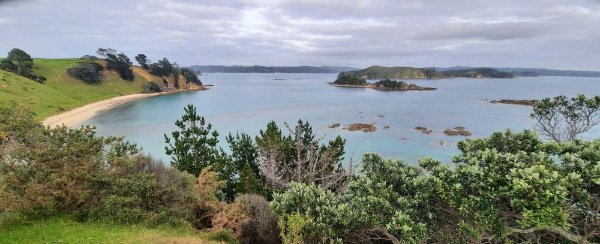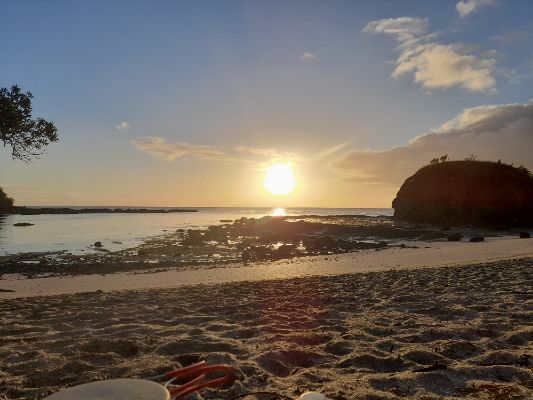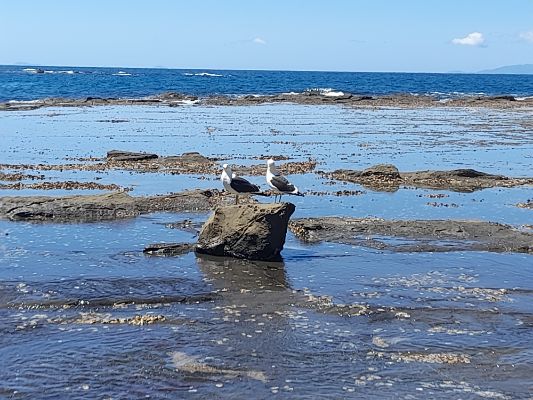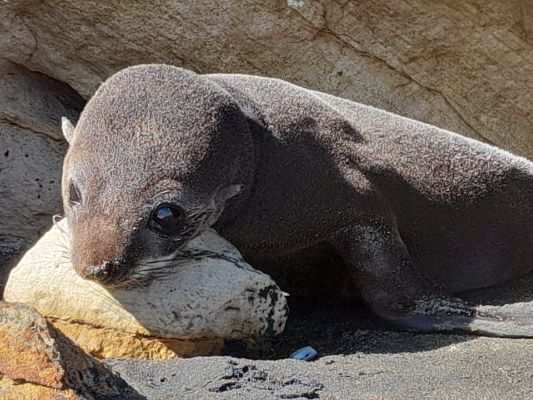The Flight Of Toreo-pango: Aotearoa’s Marine Biodiversity Under Threat
During hot summer days in Aotearoa, the beach is a favourite playground for many people. However, to the marine animals (including seabirds, fish, crustaceans, shellfish etc.) that live there, the beach is their home. It is sad that this simple fact eludes people who choose to put their fun ahead of the lives of animals.
The coastline in Aotearoa is incredibly beautiful. We go there for several reasons – recreational and commercial. It is a reenergising environment that is good for our spirit.

However, from ecological perspective things are not quite so rosy. According to the Ministry for the Environment New Zealand in 2019, 22 percent of marine mammals, 90 percent of seabirds and 80 percent of shorebirds are threatened with, or at risk of, extinction. More than 85 percent of shellfish ecosystems have been impacted by human activity. And human recreational activity is one of the contributing factors in this devastating scenario.
This is a crisis. It is a crisis that is human-induced and many of us need to take a step back and change our behaviour at the beach.
For example, a recent news article reported that four pairs of variable oystercatchers (a threatened species of waders) had abandoned their nests an Onahau Sandspit after quadbikers rode through their home. After experiencing the wheelies, donuts and jumps on the beach the oystercatchers abandoned their nests.
An endemic Aotearoa shorebird, the variable oystercatcher (or toreo-pango in Māori) nest in summer on rocky and sandy beaches and sandspits. These black headed and white bellied birds are stunning. They have characteristic bright orange beaks, orange eye rings and pink legs. They rely on the shoreline for their food, favouring mussels, tuatua and cockles.
The Oystercatcher can be found throughout coastlines of Aotearoa, with their numbers at around 5000 individuals. They are considered ‘At Risk (Recovering)’ under the New Zealand ‘threat ranking’ scheme.
Oystercatchers have evolved to open bivalve shellfish by twisting them open with their bill or hammering a hole in them. They carefully teach this skill to their young.
Their chicks look like fluffy marshmallows on stick legs, scurrying around their protective parents. They hatch out of stone-coloured eggs laid in a scrape in the sand.
How easy it is for a quad bike to smash one of those stone looking eggs into the sand. The scrambled remnants of a ‘life-never-lived’ drying rapidly in the hot sun. The waves lapping the shores; the sun going down on yet another ecological disaster.

Another recent news story by the Department of Conservation (DOC) is of protected seabirds being found killed or injured by blowdarts at Waikanae. One bird reportedly died as a result and the other one had a dart impaled in their leg. These birds are Red-billed gulls/tarāpunga, and they are a protected species under the Wildlife Act. They are a nationally vulnerable.
DOC Supervisor Melody McLaughlin reportedly said,
“This behaviour demonstrates an astonishing lack of respect for the life and welfare of our protected species, and we are taking the matter extremely seriously.”
“Our threatened wildlife shouldn’t be used for target practice.”
Indeed they shouldn’t.
The shorelines and seas of Aotearoa are the home of many species of incredible marine animals. Shorebirds such as the dotterel and oystercatcher live here, guarding their nests, picking among the shoreline for food, and squabbling. Seabirds such as petrels and albatross dip and dive for fish. Stingrays glide on the sand floor in the shallows. The rock pools are home to many kinds of crabs and shellfish.

In addition to fish and birds, Aotearoa has a number of endemic penguins like the kororā or little blue penguin that are also at risk.
And of critical significance are the Hector’s dolphin and Māui dolphins who are the rarest and smallest dolphins in the world. Both are at risk from overfishing and boat strike among other things. The Māui dolphin only has between 48 and 64 individuals left is and the conservation status is nationally critical.
The New Zealand fur seal - or kekeno in te reo Māori – is another sea animal under threat in our waters. Their population is now recovering after nearly becoming extinct from hunting in the 1800s. They are protected but still harmed by human activities such as fishing and getting caught in nets, oil and gas exploration, disturbance from tourism and illegal attacks.

Not quite so cute and furry is the endemic Aotearoa shellfish called toheroa -a Māori word meaning "long tongue”. You would think that living under the heaving and relentless surf of west coast beaches in Aotearoa would make this little creature resilient. Not so. Being considered a national delicacy, the once abundant Toheroa was ‘harvested’ extensively up until the 1970s and the numbers began collapsing. Despite quotas being placed on the amount that could be collected, the never recovered and now remain in decline.
Human activity is again to blame. One of the reasons that Toheroa is not recovering is because of recreational activity. In Aotearoa it is legal to drive cars on many beaches which presents many threats to marine life. Driving on beaches can harm them as they live in the sand just below the mid-tide mark and can be exposed to tyre wheels with the fall of the tide. People taking more than the quota will also continue to impact numbers. Sedimentation and toxins also have a negative impact on them.

Biodiversity needs to be protected because it is part of a great ecological web and when a species becomes extinct it weakens this network. For example, shellfish are considered excellent at filtering water and removing excess nitrogen. They keep the ocean clean.
Yet many people don’t consider the
biodiversity around them at the beach. Instead, they are
after a day of fun. With the sun’s heat comes people on
jet skis, people on quadbikes and in utes, people with their
loud and blaring music. And in some places, people with
dogs.
And it all contributes to a loss of very important
biodiversity.
Fishing is another activity that kills not only fish but also ‘by-kill’ – those animals accidently caught up in nets or fishing lines or killed by the motor blades of boats. For example, a day at sea catching fish might end with the death of an albatross. Albatross often become fisheries by-catch as they follow fishing boats hoping for an easy feed of bait and fish scraps.
Sometimes they will take the bait and be dragged under water and drown.
It’s a horrific way to die.
The waste that humans leave behind from their day’s fun also hurts sea life. At the end of a sunburnt day, an empty plastic bottle lies motionless on the sand. It grins from its sandy haven, waiting to be taken on an adventure on the high seas when the tide comes in. Here it will join the estimated 250 metric tonnes of plastic waste circulating in the world oceans.
In 2018 Forest and Bird spokesperson Karen Baird reported that Aotearoa waters pose the greatest global risk to seabirds eating plastic waste. Thousands of seabirds die in the Northern hemisphere each year due to swallowing plastic. Alongside overfishing, plastic pollution is contributing to decline of seabirds and other sea life.
Such thoughts can be depressing. The beach is a good place to think and to walk; to let words trickle and blossom. And I think of the word ecocide. Ecology, ecocide, ecological grief. The words compete for my attention amidst the squawks of seabirds.
A little dotterel / tuturiwhatu runs rapidly in front of me, looking back to make sure I am following. I know this ploy to lead me away from the nest site. I ignore the tuturiwhatu who then pretends to have a broken wing. I need to get out of his territory.
I think of ecocide again. It’s a word that sounds as destructive as it is. Ecocide is the wilful or negligent destruction of the natural environment by humans. Ecological grief is the feelings of deep sorrow experienced by those as a response to ecological catastrophe.
Many species of seabirds and shorebirds are endemic. They are taonga species (treasured species for Māori). The legacy of European colonisation in Aotearoa includes the extinction of taonga species.
As the rest of the summer unfolds in Aotearoa I hope that people will rethink their actions. The beaches in Aotearoa are not your playground. They are the home of other animals; of species that have evolved and lived for centuries. There is a deep history here that people are riding roughshod over (excuse the pun).
These animals are already under threat from climate change and ocean acidification. They don’t need any more stressors.
To those on quadbikes on the beach I have this message. Take time to reflect on your place in the world. Think about your relationality with non-human animals and make changes to your behaviour.
And to others – take your waste home and consider the animals whose home you are playing in.
Lest we lose our place on Earth forever.


 Gordon Campbell: On The New Pope, And The Israeli Attack On Peter Davis
Gordon Campbell: On The New Pope, And The Israeli Attack On Peter Davis Water New Zealand: Stormwater 2025 - Tackling Flooding And Storms To Build A Climate-Resilient Future
Water New Zealand: Stormwater 2025 - Tackling Flooding And Storms To Build A Climate-Resilient Future New Zealand Labour Party: Labour Asks Why Govt Is Silent On Gaza
New Zealand Labour Party: Labour Asks Why Govt Is Silent On Gaza Transport Accident Investigation Commission: Near-Collision Highlights Safety Lessons For All Busy, Unattended Aerodromes
Transport Accident Investigation Commission: Near-Collision Highlights Safety Lessons For All Busy, Unattended Aerodromes Green Party: Wildlife Law Change A Deep Betrayal Of Public Trust
Green Party: Wildlife Law Change A Deep Betrayal Of Public Trust NZCTU: Unions Launch Petition To Protect Pay Equity
NZCTU: Unions Launch Petition To Protect Pay Equity Greenpeace: Greenpeace Slams PM’s Science Pick - 'Polluters Are Running The Show'
Greenpeace: Greenpeace Slams PM’s Science Pick - 'Polluters Are Running The Show'


